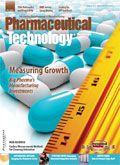Enactment of FDA Reform Act Improves Drug Safety
New law provides FDA with the resources it needs to safeguard drug supply chain.
The bipartisan enactment of the Food and Drug Safety and Innovation Act, signed into law on July 9, 2012, is an important achievement in FDA's objective to ensure the efficiency and quality of drugs manufactured and distributed in the US and abroad. For generic drugs, the legislation makes it possible for the federal government to increase foreign facility inspections, speed approval of lifesaving medicines, reduce drug shortages, and improve the quality and availability of drug ingredients.

John DiLoreto
A risky market
In the past, the US drug supply has been susceptible to sub-par quality drugs due to the lack of enforcement of basic drug quality inspections of foreign facilities—leading to lax quality compliance standards. According to FDA, approximately 80% of APIs are imported, primarily from high-risk regions, such as Asia (1, 2). FDA has been unable to accurately identify all foreign facilities manufacturing drugs entering the US, and the agency does not have the resources or systems in place to track such foreign facilities for the purpose of quality inspections.
Although domestic pharmaceutical companies can expect an FDA inspection every two to three years, most of their foreign counterparts have never been inspected by FDA. According to a 2010 GAO report (3), it would take FDA, with current resources, more than nine years to inspect all foreign facilities just once. The lack of routine risk-based inspection of foreign facilities endangers the safety of the global drug supply chain, encourages non-domestic job growth, and has the potential of becoming a national security issue.
FDA gains resources
With the passage of the FDA reform bill, the agency indicated in negotiations with stakeholders that it will have the resources it needs to inspect all foreign and domestic generic-drug production facilities with regularity (4).
Inspections will be performed on a risk basis, focusing on the facilities posing the greatest risk to the supply chain. This will provide greater confidence in the safety of generic drugs imported from developing countries.
Members of the Bulk Pharmaceuticals Task Force (BPTF), an industry trade organization of drug ingredient makers within the Society of Chemical Manufacturers and Affiliates, will be among those paying FDA nearly $1.5 billion over the course of five years to accomplish these goals. The Generic Drug User Fee Act (GDUFA), which was negotiated last year by BPTF members and other industry trade groups, is included in the FDA Reform Act. GDUFA will expedite the availability of more affordable, high-quality generic drugs; enhance FDA's ability to prevent substandard and misbranded drugs from entering the supply chain; and level the playing field between foreign and domestic firms.
Significantly, the legislation also authorizes FDA to confiscate and destroy counterfeit, adulterated, or misbranded drugs that enter the US rather than returning them to foreign manufacturers. Past practices forced FDA to send the drugs back to their country of origin, where they were ultimately returned to the drug supply chain in other countries.
Industry and FDA collaborate
Among the most significant but least-known developments contributing to this legislative success is the fact that, at a time when company budgets are tight and economic uncertainty runs high, generic-drug producers voluntarily agreed to pay these fees to avoid another heparin-like tragedy. Improving the safety of drugs throughout the supply chain will come at great expense and will only succeed through the diligence of all stakeholders. FDA must be attentive with its drug approval and inspection procedures, and drug producers must remain committed to manufacturing drug ingredients governed by cGMPs. The pharmaceutical industry becomes more global each day, and it becomes increasingly clear that all manufacturers must work to implement quality programs.
As the law is implemented in stages over the next few years, the hope is that the industry will see results from these major steps taken to safeguard the drug supply. The ongoing dialogue between drug manufacturers and FDA has led to a path forward that can hopefully ease the minds of consumers. However, there is more work to be done. Currently, foreign over-the-counter (OTC) drug manufacturing is not being inspected, nor is their inspection included in the passage of the FDA Reform Act. Hopefully, a risk-based inspection approach will be applied to OTC products as well in the future.
John DiLoreto is executive director of the Bulk Pharmaceuticals Task Force, an affiliate organization of the Society of Chemical Manufacturers and Affiliates (SOCMA).
References
1. B. Nychis, Import of Human Drugs and Human Drug Components, CDER Office of Compliance, Office of Drug Security, Integrity & Recalls, Division of Import Operations & Recalls, Import Operations Branch (IOB), Presentation (June 2011).
2. FDA, Pathway to Global Product Safety and Quality, A Special Report, Revised (July 2011).
3. FDA, Drug Safety: FDA Has Conducted More Foreign Inspections and Begun to Improve Its Information on Foreign Establishments, but More Progress Is Needed, United States Government Accountability Office, Report to the Committee on Oversight and Government Reform, House of Representatives, GAO-10-961 (September 2010).
4. FDA, Fact Sheet: New User Fees for Generic Drugs Will Enhance Americans' Access to Less Expensive Drugs and Generate Major Cost Savings, GDUFA Performance Goals and Efficiency Improvements, Inspection Metrics (July 9, 2012).
